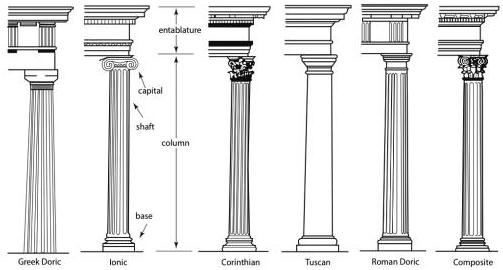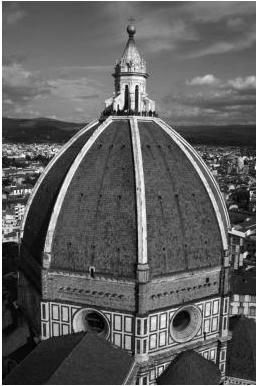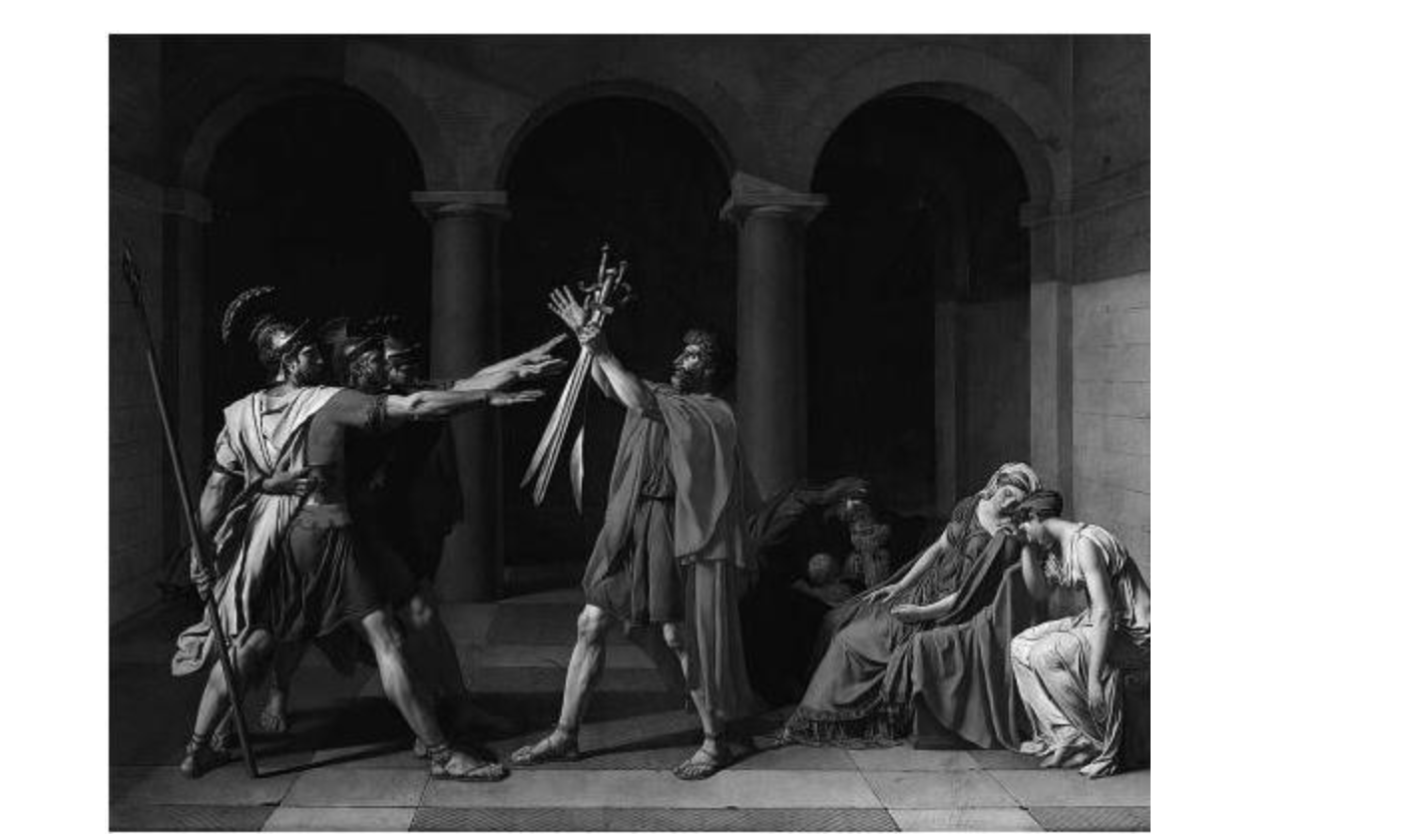Art Fundamentals
1/80
There's no tags or description
Looks like no tags are added yet.
Name | Mastery | Learn | Test | Matching | Spaced |
|---|
No study sessions yet.
81 Terms
aesthetics
philosophical inquiry into the nature and expression of beauty
art criticism
explanation of current art events to the general public via the press
“fine art”
in the past, art historians limited their focus to art to paintings, prints, drawings, sculptures, and architecture produced specifically for appreciation by an audience who understood these objects as a work of art
now art can be a visual material that has a special meaning or valued for its aesthetic appeal
“craft”: textiles, pottery, body art, mass-produced posters/ advertisements, and ordinary household items
Michelangelo’s paintings on the ceiling of the Sistine Chapel
Purpose: meaning of art can shift over time and can be perceived differently through different approaches
Pope, who commissioned the work, and has background info on sophisticated theological knowledge
Worker, who cleaned the floors, has a lower level of literacy
Meaning of art is dependent on…
religious background, physical access to a work of art, social status, education, race, and gender
formal analysis
focused on visual qualities of the work of art itself that reveals meaning
contextual analysis
looking outside of the work of art in order to determine its meaning. Examining the context of when it was created and when it is consumed.
Looks at cultural, social, religious, and economic context in which work was produced
issues of patronage (not loyal to it), access, cost, and in relation to other art works
comparative study (contextual analysis)
contrasting the shift in techniques and stylistic changes and how they are an affect of each other
Direct examination vs reproduction
art historians settle with reproductions due to practical constraints such as damage or lost in time.
when looking at a piece, they will also look for other works by the artist such as sketches, preparatory models, or completely different art pieces
participant observation
art historian will participate in the artists’ activities while observing behaviors and interactions
Pliny the Elder
analyzed historical and contemporary art in hi text Natural history (an encyclopedia of natural science that spanned thirty-seven books)
Giorgio Vasari
Gathered biographies of great Italian artists (past & present) in The Lives of the Artists
Provided us with insight into the changing role of artists AND
artistic genius: someone’s ability to invent and develop original ideas, express feelings beyond personal experience, and conjure artistic works that are unlike anything seen or heard before
Emphasized rigorous study of stylistic development related to historical context
Johann Joachim Winckelmann
shifted focus to stylistic development in relation to historical context
include diverse perspectives and a broader range of visual culture
Art of Old Stone Age (Upper Paleolithic Period)
c. 30,000 BCE | Old Stone Age or the Upper Paleolithic Period
cave paintings in Chauvet Cave
Represents the Old Stone Age (Upper Paleolithic Period)
paintings feature animals: horses, rhinoceroses, lions, buffalos, and mammoths
Created with red ochre and black charcoal
cave paintings in Lascaux and Altamira
animals and human hands
Venus of Willendorf (example)
Small stone female figures with exaggerated features
representative of the Old Stone Age
Art of the Middle Stone Age (Mesolithic Period)
climate got warmer
rock shelter paintings emerged (animals and humans)
scenes where humans dominate animals
Art of the New Age (Neolithic Period)
megaliths: large, rough-hewn stones arranged in rings or rows
Stonehenge (England): concentric rings of sarsen stones and bluestones.
"heel-stone" marks the sunrise point on the midsummer solstice.
Iconic example of megalithic architecture in the New Stone Age
stonehenge
In what conditions does art thrive?
organized cultures containing stable cities and ruling classes
preservation in burial chambers, caves, tombs
survival of Mesopotamian art
Tigris-Euphrates valley and Egypt were vulnerable to invasion leading to the use of perishable materials have resulted in fewer surviving examples
Sumerians (Mesopotamian Art)
created sculptures and buildings
ziggurats: massive stepped pyramids that served as temples and administrative centers
The Ziggurat of Ur
Akkadian Dynasty (Mesopotamian Art)
Art depicted Akkadian rulers
emphasized loyalty to the king
Code of Hammurabi (Mesopotamian Art)
Hammurabi of Babylonia codified Babylonian law that was preserved on a stone stele with a relief sculpture
Assyrian art (Mesopotamian Art)
Relief carvings depicting battles and hunts
Neo-Babylonian Art (Mesopotamian Art)
Hanging gardens of Babylon and the Ishtar Gate
Persian Empire (Mesopotamian Art)
Well known for its architectural achievements such as the palace at Persepolis.
Ancient Egyptian Art (techniques)
c. 3000 BCE to 332 BCE
Hierarchical scale: size of figures reflects their status
Palette of King Narmer (larger than any other figure)
Fractional representation: show each body part as clearly as possible.
Burial Customs: mummification and entombmer
preserved many objects and images (ex. burial mask) found in Tutankhamun’s tomb (made of gold, blue glass, and semiprecious stones)
Sculptures: created for tombs to ensure the deceased’s spirit had a place to dewell
Focus on Egyptian funerary art showcases intricate craftsmanship and its symbolic significance to its people
Egyptian Art (preservation)
Art remained consistent for 3000 years since it was deeply tied with religious beliefs about the afterlife
Conventions:
Pharaohs were depicted as athletic & youthful
Figures portrayed with a composite view (combining profile and frontal aspects)
Hieroglyphs: record the pharaoh’s reign and lineage
Nubian Art
Still revising art history about this African civilization
Period when Nubia ruled Egypt, and the pharaohs were Nubian
(Nubia was located south of Egypt)
Cycladic Culture (Greek and Roman Art)
3200 to 2000 BCE in the Cyclades
Produced simplified, geometric nude female figures, decorated pottery, and marble bowls and jars
Aegean Sea, Crete, Aegean coast
Minoan Culture (Greek and Roman Art)
Peak in the second millennium BCE
Depicted sea life (ex: statues of a female snake goddess)
Naturalistic pictorial style in frescoes and pottery design
Developed on Crete, centered around teh city of Knossos, home of the Minotaur
Mycenaean Culture (Greek and Roman Art)
Built elaborate tombs
Known for gold work and relief sculpture
Centered around the city of Mycenae on the Greek mainland
Archaic Period (Ancient Greek Art)
c. 660-475 BCE
Greeks created marble and limestone sculptures
influenced by Egyptian and Mesopotamian stone sculptures
Sculptures borrowed the frontal pose from Egyptian art but more dynamic and realistic human features.
Temples built with Doric and Ionic columns
Vase paintings had black silhouetted figures and Corinthian styles with floral backgrounds.
Classical Period (Ancient Greek Art)
c. 475-323
Temples built with Doric columns
Sculptures: solemnity, strength, and simplicity, focusing on figures before or after important actions
shift from stiff frontal postures —> life-like figures
“contrapposto” or counter positioning: pose where weighted is shifted onto one leg
EX: Parthenon: Ancient Greek Temple for Athena
Influenced Greek sculpture influenced Western art for thousands of years

Late Classical and Hellenistic Periods (Ancient Greek Art)
c. 323-31 BCE
Architecture decline after Athens was defeated in the Peloponnesian War
Corinthian columns were more popular
Hellenistic Period took in influence from Eastern civilization
EX: Venus de Milo and Laocoön Group
Etruscan Art (Ancient Greek Art)
Transition from Greece ideals to the pragmatic (philosophical) ideals of Romans
Known for tomb decorations
Etruscan buildings constructed of brick and wood w/ ceramic models depicting temples with tiled roofs and Greek-style columns
Sarcophagus lids, and bronze work
Funeral celebrations consisted of dancing and playing music (seen on paintings of tomb walls)
Roman Art (Ancient Greek Art)
By the second century BCE, Roman artworks were variations of Greek works, with idealized presentations of Roman rulers based on Greek standards.
Utilized concrete to construct large domed buildings
Pioneered the curved arch for bridges and aqueducts
Created sculptures, triumphal arches, relief sculptures for funerary purposes, and portraits
Style that idealized Roman ideals rather than naturalistic depictions
Influenced (ex): Colosseum (72-80 CE) and Pantheon (c. 126 CE)
Byzantine and Medieval Art (Ancient Greek Art)
Context: Fall of the Roman empire, evolved into separate kingdoms but main one was Byzantium
Mosaic work, using ceramic tiles, stone, or glass
Christian content
EX: Hagia Sophia (532-537 CE) in Constantinople
EX: Book of Kells and the Coronation Gospels: illuminated manuscripts that were works of art that exchanged artistic ideas
Metalwork (Byzantine and Medieval Art)
popular among nomadic Germanic people
Abstract, decorative, and geometric designs on jewelry and ornaments.
Vikings (Byzantine and Medieval Art)
Name the style
used wood for artistic designs and sculptures on their ships
merged with Anglo-Saxon England and Celtic Ireland, resulting in the Hiberno-Saxon style.
Romanesque Church
Churches were a dominant art form using Romanesque - Roman arch
Define - Stone vaulted buildings, forming a tunnel of arches (barrel vault)
Massive walls, small windows supported the arches
Door openings decorated with carvings and relief sculptures
Gothic style
pointed arches, ribbed vaults, and flying buttresses
EX: Chartres Cathedral
Giotto di Bondone
1267-1336/37)
Simple perspective, overlapping, and modeling figures to create the illusion of depth
Late medieval period money
paper money was first developed (vast fortunes for families like Medici
Late medieval period artists
artists seen as intellectual figure
access to Greek, Roman art in Italy causing the influence of Renaissance art
Lorenzo Ghiberti (1381-1455)
Won the competition with figures from classical Greece
Comp in Florence (1401) to design the city’s new baptistery doors (important event in the beginning of the Renaissance)
Filippo Brunelleschi (1377–1446)
Developed linear perspective and completed the dome of the Florence Cathedral

Masaccio (1401-28)
Used linear and aerial perspective in his frescoes
Botticelli (1444-1510)
Estabished an image of female beauty with his painting The Birth of Venus
“Renaissance Man”
Leonardo da Vinci (1452–1519) and Michelangelo (1475–1564)
Leonardo de Vinci was an inventor, architect, engineer, painter, sculptor, scientist, and musician
Mona Lisa: known for its use of sfumato (mellowed colors and blurred outline)
David (1504) and other works
Created by Michelangelo
Made by a flawed piece of marble
embodiment of the spirit of Florence as a republic
Depicted the ceilings of the Sistine Chapel (1508-1512)
Raphael Sanzio (1483–1520)
employed numerous assistants to cover the Pope’s official chambers with frescoes and created the School of Athens.
Renaissance in Northern Europe (compared Souther Europe)
More realistic due to the use of new oil paints
Although Italy experienced the Renaissance, European art north of the Alps remained Gothic Style
Lacked Italy's cultural connection to ancient Rome
Not in close proximity to ancient Roman works
Northern artists used linear perspective and colors differently
Artists traveled to italy to study spreading Renaissance styles
Trade connections between German and Venetian merchants
Matthias Grünewald (1475?–1528)
Known for religious scenes
EX: Christ's crucifixion
EX: Isenheim Altarpiece (c. 1510–15), consisting of nine panels.
Albrecht Dürer (1471–1528)
most famous artist of Reformation Germany.
combined naturalistic detail with Italian theoretical ideas.
Traveled to Italy
Published woodcuts and copper engravings
EX: The Four Horsemen of the Apocalypse (c. 1498).
Hans Holbein the Younger (1497–1543)
one of the greatest Renaissance portraitists.
Court painter to King Henry VIII of England. Set the standard for English painting until the nineteenth century.
Baroque Art
Produced from the late sixteenth to the mid-eighteenth century
Differed from renaissance since it had more movement and energy
Chiaroscuro: exaggerated contrasts between light and dark, creating a theatrical lighting effect
Appealed largely to emotions in order to appeal to faith since the political landscape shifted between wars between cities then to empires
During this time, rulers had the right to govern bc the right was given by God (ex: Empress Maria Theresa of Austria, Peter the Great, Catherine the Great of Russia, King Louis XIV of France)
Caused enlightenment thinkers like Jean-Jacques Rousseau to speak out against
ironic since rich were those that supported the artists
Caravaggio (1571–1610)
Italian Baroque painter
Artworks using extremes of dark and light are termed "caravaggesque."
Caravaggio portrayed religious figures as ordinary people in simple clothing.
Artemisia Gentileschi (1593?–1652?)
Known for her adaptation of Caravaggio's techniques.
Her works include self-portraits and paintings of Old Testament women.
Gianlorenzo Bernini (1598–1680)
sculptor, architect, painter, and draftsman
EX: Ecstasy of Saint Teresa (1647-52) in the Cornaro Chapel with dramatic gold lighting
Pushed use of marble to new limits, making stone look like real fabric and clouds
Peter Paul Rubens (1577–1640)
Established a large workshop in Flanders and produced energetic and colorful works that became models for many artists.
Rembrandt van Rijn (1606–69)
Dutch artist known as a painter, printmaker, and draftsman
The Night Watch (1642): grouping members in a way that gave more attention to some than others
Louis XIV
The reign of Louis XIV in France marked a blossoming of French culture. He built the lavish palace at Versailles, which became a model for other monarchs.
The Salon
annual exhibition that established rules for judging art and influenced the art world
Académie Royale de Peinture et de Sculpture
Established to impose aesthetic standards and principles of taste.
Diego Velázquez (1599–1660)
Court painter to King Philip IV of Spain.
method of building figures from patches of color influenced later artists, including the Impressionists.
Rococo style
aim: celebrate gaiety, romance, and frivolity
emphasis: light-hearted decoration
colors: gold and pastel

Jean-Antoine Watteau (1684–1721) Rococo Style
Innovator of the fête galante genre, which depicted nobility enjoying leisure time in the countryside.
François Boucher (1703–70)
Favorite painter of Madame Pompadour, mistress to Louis XV. Transformed classical myths into scenes of courtly gallantry.
Jean-Honoré Fragonard (1732–1806)
promoted by Madame Pompadour and influenced by Boucher.
Neoclassicism
Revival of interest in the classical art of Greece and Rome - attempt to hearken back to the democratic ideals of the ancient world
influenced by enlightenment philosophy
direct challenge to Rococo style
Jacques Louis David (1748–1825)
His paintings, such as the Oath of the Horatii (1784), illustrated republican virtues.
perfectly represented neoclassicism
Dramatic scene from ancient times that emphasizes republican virtues and drawing inspiration from classical antiquity

Jean Dominique Ingres (1780–1867)
sharp outlines, unemotional figures, careful geometric composition, and rational order.
Romanticism
highly imaginative, exotic or melodramatic elements, took awe-inspiring natural wonders as subject matter

Eugène Delacroix (1798–1863)
Centered on exotic themes and included foreign settings, violence involving animals, and historical subject matter.
Others: Théodore Gericault (1791–1824). William Blake (1757–1827)
Realism
(reaction to Neoclassicism and Romanticism)
inspired by the idea that painting must illustrate all the features of its subjects, including the negative ones.
aimed to show the lives of ordinary people as subjects as important as the historical and religious themes that dominated the art exhibitions of the day.
Gustave Courbet (1819–77)
Outraged audiences by showing ordinary workmen repairing a road at the official Salon in The Stonebreakers (1849–50), a painting that also had political implications.
Vividly illustrates lives of ordinary laborers
Others: Honoré Daumier (1808–79), Jean François Millet (1814–75)
Impressionism
Focus on capturing everyday scenes and the effects of light and color, rather than precise detail
rapid strokes to capture rapidly changing light
Édouard Manet (1832–83)
refferred to as the first Impressionist
showed light by juxtaposing bright, contrasting colors, inspired and influenced the generation of artists
Le Déjeuner sur L’herbe (Luncheon on the Grass) (1863): caused scandal by depicting contemporary clothed men with a nude woman.
Claude Monet (1840–1926)
Impression, Sunrise (1872): Painting where the name “Impressionism” comes from
urged artists to paint outdoors and use newly invented paints and brushes